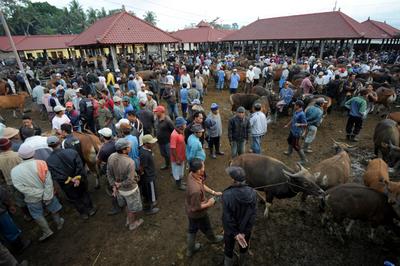The 12th Five-Year Plan is due to commence in 2012, a year after the population census of 2011 was conducted. Both the caste and poverty-line censuses are also to be conducted in the course of this year. A great deal of fresh, authoritative information will accordingly be available as India’s planners flesh out the prime minister’s directive to aim for growth in the range of 9 to 9.5 per cent over the 12th Five-Year Plan’s period, even while attempting to improve the distributive reach and ecological sustainability of this growth.
Interestingly, China also entered its 12th Five-Year Plan earlier this year. In contrast to the mandate given to India’s planners, China’s already approved plan seeks to slow down rather than increase aggregate growth performance over that achieved in the previous plan period. This is to allow the economy space to address the severe economic and social imbalances that have emerged over the course of the past decade’s rapid growth.
In a recent article in Economic and Political Weekly (‘Prospects and Policy Challenges in the Twelfth Plan’, 21 May 2011), India’s Planning Commission Deputy Chairman Montek Singh Ahluwalia provided his assessment of the 11th Five-Year Plan’s main accomplishments, and the prospects for improving growth performance in the 12th Five-Year Plan, arguing that one of the emerging challenges is managing India’s urban transition.
In this context, the Census 2011 revealed India’s rate of urbanisation increase over the prior decade was slower than projected earlier, both by UN experts and Indian scholars. The Census 2011 figures, once tabulated, will provide a definitive assessment of what happened in the last decade, and what might be expected in the decade to come.
In his article, Mr Ahluwalia reckons the current urban share of the population is at around 30 per cent, not much changed from the Census 2001-estimated share of 27.8. The Planning Commission currently projects this to reach 30 per cent by 2030, implying an increase of 250 million urban dwellers above the current 350 million. China’s latest census puts its urban share at almost 50 per cent, up by 13 per cent since 2000. Indeed, for the first time in history, the world now has more than 50 per cent of its population living in urban areas.
A broad range of factors influence the growth of the urban population, notably differentials between average household incomes in urban and rural areas. The Chinese experience suggests if India succeeds in achieving its ambitious growth objectives, the rate of urbanisation could increase even more rapidly than currently expected.
Increased urbanisation should be welcomed. Most modern economic activity takes place in cities, and growth in productivity and income is easier in an urban context. Well-designed cities are also efficient users of energy compared with dispersed habitations, and efficiently functioning cities are a key element in the competitiveness of a modern economy.
The Indian government has been primarily seized by two aspects of the urbanisation challenge: the financing of urban infrastructure and the energy needs of India’s emerging cities. The first was comprehensively discussed in the recent Report of the High Powered Expert Group Estimating the Investment Requirements of Urban Infrastructure (Chair Dr I J Ahluwalia) by the Ministry of Urban Development, while the second is being addressed under the Action Plan for Climate Change.
However, systematic attention is needed for a third important element of the urban challenge: the health status of urban citizens. These challenges were the focus of a workshop at Oxford in January. The workshop, with which I was involved, was organised under the aegis of the Emerging Markets Symposium, bringing together public health experts, economists and practitioners from cities in emerging markets from around the globe.
Several reasons make focused discussion of urban health issues in emerging markets important. For one, the growth and scale of emerging market cities over the next few decades will be unprecedented in human history. And the level of urbanisation will take place at comparatively lower levels of per capita income, compared to the now-rich countries, affecting the resources available to governments and the degree of inequality in urban populations.
Perhaps most importantly, health outcomes in cities have relatively little to do with healthcare expenditures and much more to do with broader elements of urban design and public health: water, air, transportation, recreational facilities and the like. As at the national level, these issues are typically seen in isolation, and resource allocation is determined within each ‘silo’, rather than optimising expenditure across functions. Yet health outcomes are critical not only for the welfare of the citizens but also for the urban workforce’s productivity.
Each urban conurbation is distinctive, and solutions will need to be found locally, as has been done in Latin American cities like Bogota and Curitiba. Three things seem essential to make progress: effective and politically-empowered mayors (or chief ministers); a well-developed tracking and information system that helps monitor and analyse trends in health status; and flexibility in resource-allocation at the city level, irrespective of where those resources ultimately originate.
It is hoped that those involved in preparing the 12th Plan will give this dimension of India’s urbanisation the attention it deserves. Not doing so at this critical juncture could trap millions of Indians in avoidable misery.
Suman Bery is a country director at the International Growth Centre and member of the Prime Minister’s Economic Advisory Council.
An earlier version of this article was published here by the Business Standard.

